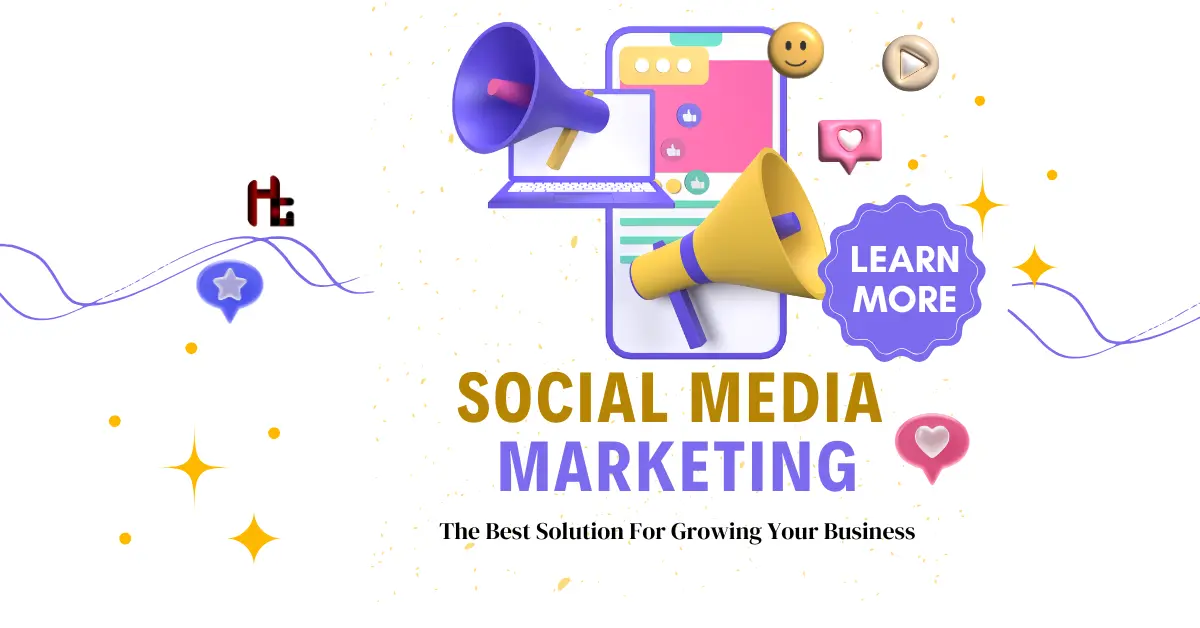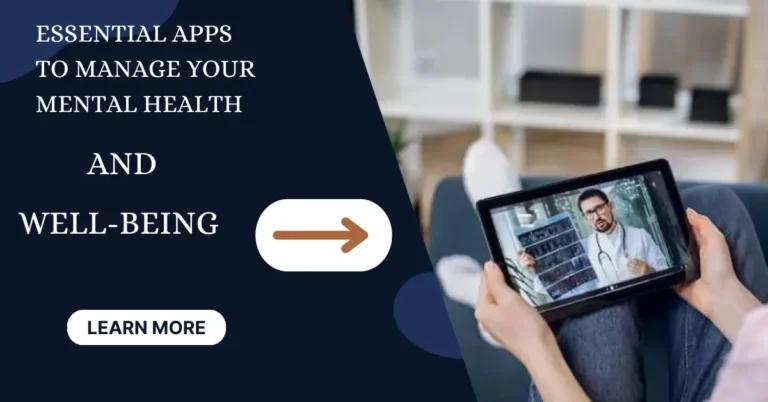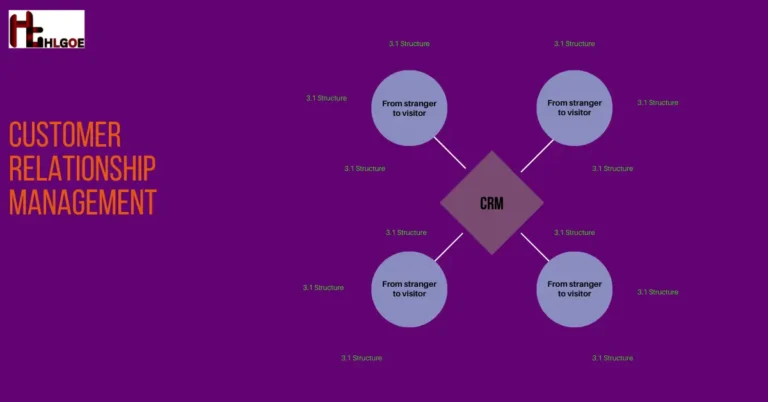What is social media marketing? A Beginner’s Guide to Understanding the Basics
In today’s digital age, Social Media Marketing (SMM) has become a cornerstone of most successful business strategies. By asking What is Social media Marketing and understanding it the more will not only help you but make your Online Presense awesome and recognized across the Globe. Today, with billions of people using platforms like Facebook, Instagram, Twitter, and LinkedIn, understanding the fundamentals of Social Media Marketing is crucial for anyone looking to grow their online presence. Whether you’re a small business owner, an entrepreneur, or simply curious about the marketing world, Social Media 101 is the perfect starting point to grasp how online marketing works and how to leverage its power for your advantage.
What is social media marketing…?
At its core, Social Media Marketing involves using social platforms to promote products, services, or content to a targeted audience. It’s a dynamic field within the broader realm of Digital Marketing, where businesses can engage with potential customers in real-time. But what makes Social Media Marketing so effective? The key lies in its ability to connect directly with people, build relationships, and drive conversions—all while offering measurable results. As a beginner, you’ll need to understand how these platforms work, the concepts behind them, and how to utilize Social Media for marketing success.
One of the major benefits of Social Media Marketing is its accessibility. Unlike traditional forms of marketing, online marketing offers businesses the ability to reach a global audience without the hefty price tag. Moreover, it allows for targeted advertising based on a user’s behavior, interests, and demographics, ensuring that your message reaches the right people at the right time. But beyond selling products or services, SMM also enables businesses to craft meaningful connections with their audience, fostering brand loyalty and trust.
Throughout this guide, we’ll explore not just what Social Media Marketing is, but how it works, key concepts you’ll need to understand, and examples of successful campaigns. Whether you’re new to marketing or simply need a refresher on the Marketing Basics, this post will provide the foundational knowledge to take your first steps into the world of Social Media Marketing.
The Rise of Social Media Platforms
Social media has drastically changed the way we communicate, interact, and even do business. From its humble beginnings as simple networking sites, platforms like Facebook, Instagram, Twitter, and LinkedIn have evolved into global powerhouses that shape everything from trends to political discourse. Understanding how these platforms grew into what they are today provides valuable insight into their power in modern marketing.
When Facebook was launched in 2004, it was simply a social network for college students. However, it quickly became a global sensation, attracting users from all walks of life. Over the years, Facebook expanded its features, introducing tools like targeted advertising, business pages, and live streaming, all of which transformed it into a must-use platform for businesses looking to engage with consumers. In fact, Facebook is often the first place marketers look when considering paid advertising due to its powerful targeting options.
Instagram, initially known for its photo-sharing capabilities, rapidly became one of the most influential platforms for businesses to reach a younger audience. Its introduction of stories, reels, and shopping features made it even more appealing to marketers, offering multiple ways to engage with potential customers. Instagram’s visual nature is perfect for businesses in industries like fashion, beauty, and lifestyle, where imagery is essential to the message. Its integration with Facebook has further streamlined the process for businesses to run ads across multiple platforms simultaneously.
Twitter and LinkedIn also have their own unique evolution stories. Twitter, known for its short, bite-sized content, remains a popular platform for real-time news, customer service, and brand personality. LinkedIn, on the other hand, started as a professional networking site but has grown into a platform for thought leadership, B2B marketing, and job recruitment. The growth of these platforms represents the diversification of social media, and each platform’s unique features and audience make it crucial to understand where your brand fits best in the larger digital ecosystem.
Why Social Media Marketing Matters
Social Media Marketing has become an essential part of the marketing mix, and its significance cannot be overstated. One of the main reasons Social Media Marketing matters so much today is because it allows businesses to engage directly with their audience in real-time. Unlike traditional forms of marketing, such as TV or print ads, which broadcast messages to a passive audience, social media platforms enable two-way communication. This allows businesses to listen to their customers, understand their needs, and respond immediately.
Moreover, Social Media Marketing is incredibly cost-effective compared to traditional advertising. Many small businesses, startups, and entrepreneurs with limited marketing budgets can still leverage the power of platforms like Facebook and Instagram to reach their target audience. Paid social media ads are highly targeted, meaning that businesses can focus their marketing efforts on specific demographics, interests, and behaviors, ensuring that every dollar spent is going to reach the right potential customer.
Social Media Marketing also provides an opportunity for brands to build trust and loyalty with their audience. By sharing valuable content, engaging in conversations, and responding to customer inquiries, businesses can position themselves as experts in their field and establish a strong brand identity. Additionally, the visual and interactive nature of social media allows businesses to humanize their brand, creating more authentic connections with their followers. In a crowded digital marketplace, trust and authenticity are key factors that drive customer loyalty and long-term success.
Lastly, Social Media Marketing is an invaluable tool for driving traffic and conversions. By sharing links to your website, blog posts, or product pages, businesses can use social media to lead potential customers down the sales funnel. Whether through organic content or paid ads, social media provides a direct line to consumers who are interested in what your business offers. This can lead to higher conversion rates, ultimately boosting your bottom line and contributing to overall business growth.
Key Benefits of Social Media Marketing
The key benefits of Social Media Marketing extend far beyond simply increasing brand awareness. While many businesses focus on growing their followers and gaining likes, the real power of SMM lies in the long-term, measurable outcomes it can deliver. One of the primary benefits is the ability to build and nurture relationships with your audience. Through consistent engagement, whether it’s replying to comments or participating in conversations, brands can foster a sense of community around their products and services.
Another benefit is the real-time feedback that businesses can receive through social media. Unlike traditional marketing methods, where feedback may take weeks or months to gather, social media allows businesses to understand how their audience is reacting almost instantaneously. This helps businesses adjust their strategies in real-time to improve engagement or address customer concerns. Social listening tools also allow businesses to track mentions, keywords, and sentiment around their brand, providing valuable insights into what people are saying about them online.
Social Media Marketing also plays a pivotal role in driving traffic and sales. By strategically using calls to action, businesses can direct followers to landing pages, blog posts, or e-commerce stores. Engaging content, along with the ability to create highly targeted ads, ensures that businesses are not only reaching more people but the right people. This targeted approach significantly increases the likelihood of conversion, meaning that your marketing efforts are more likely to lead to sales.
Finally, another key benefit of Social Media Marketing is its ability to track and measure results. Unlike traditional advertising, which may not provide clear insights into its effectiveness, social media platforms come equipped with a wide array of analytics tools that allow businesses to track metrics like engagement, reach, click-through rates, and conversion rates. This data can help businesses refine their strategies, optimize content, and ensure that marketing efforts align with their business goals.
Understanding Social Media 101
For beginners, Social Media 101 is the essential first step in grasping how social platforms work for marketing purposes. Social media platforms are designed to facilitate interactions between users, brands, and communities. However, each platform operates with a unique algorithm, purpose, and audience that businesses must understand to use them effectively. For example, Facebook is a hybrid platform, providing businesses with a wide range of tools like groups, pages, and ad targeting, while Instagram thrives on visually striking content, making it the go-to platform for industries focused on aesthetics.
In essence, Social Media Marketing requires you to master the intricacies of each platform. For example, Twitter operates with short character limits and a real-time communication style, ideal for time-sensitive promotions, announcements, and engaging in trending conversations. LinkedIn, on the other hand, focuses on professional networking and is the perfect platform for B2B marketing, industry thought leadership, and job recruitment. Understanding what each platform does best and aligning your content strategy with these strengths is vital for success.
Another key aspect of Social Media 101 is learning the importance of community building. Social media is about creating and nurturing relationships. It’s not just about broadcasting your message; it’s about engaging in meaningful conversations with your audience. Whether it’s through responding to comments, starting discussions, or sharing user-generated content, building a loyal community around your brand is key to fostering trust and long-term relationships.
To get started, businesses should define their social media goals and target audience. It’s also essential to keep an eye on the ever-changing landscape of social platforms, as algorithms and features often shift. Keeping up-to-date with these changes will help ensure your business stays relevant and visible in an increasingly competitive digital space.
The Role of Content in Social Media Marketing
Content is the heartbeat of Social Media Marketing, as it drives engagement, tells your brand’s story, and influences how your audience perceives you. However, not all content is created equal. To truly engage with your audience, businesses need to create high-quality, relevant content that resonates with their target demographic. This includes a mix of text, images, videos, infographics, and other visual elements that align with the preferences of each platform’s audience.
The type of content you post plays a crucial role in determining how well you engage with your audience. For instance, Instagram thrives on high-quality images and short, engaging videos. Its “stories” feature is perfect for behind-the-scenes content or quick updates. Facebook, on the other hand, is a more versatile platform, supporting long-form content, articles, links, and videos. Twitter’s character limits make it perfect for bite-sized updates and engaging in real-time conversations. Understanding the format that works best for each platform is key to success.
Moreover, content should reflect your brand’s voice and message consistently. This consistency helps build brand recognition and trust. Whether you’re sharing industry insights, entertaining posts, customer testimonials, or educational content, it should all align with your brand identity. People engage with brands that offer value, whether that value comes in the form of entertainment, education, or inspiration. Content that is tailored to your audience’s needs and interests will build stronger, more authentic connections.
A successful content strategy should also include a mix of organic and paid content. Organic content is the material you create and share naturally without any direct costs, whereas paid content involves using social media ads to promote specific posts or campaigns. Both types of content play an important role, but understanding when and how to use each can make a significant difference in your marketing efforts. High-quality content drives the overall success of your Social Media Marketing campaign, making it an essential area to focus on.
How Social Media Algorithms Work
Understanding how social media algorithms work is a critical aspect of Social Media Marketing. Algorithms are essentially the rules that platforms like Facebook, Instagram, Twitter, and LinkedIn use to determine which posts appear on a user’s feed. These algorithms are based on complex calculations, which evaluate several factors like engagement (likes, shares, comments), relevance to the user, and content type (image, video, text, etc.).
On Facebook, for example, the algorithm prioritizes content that sparks meaningful conversations. The more engagement a post receives, the higher the chances it has of appearing in other users’ feeds. This means that businesses must create content that not only attracts attention but also encourages interaction. Posts with higher engagement signals—such as comments and shares—are ranked higher because they are deemed more valuable and relevant to the user. Understanding this principle helps businesses create content that encourages comments, discussions, and shares.
Instagram, on the other hand, uses a combination of factors to determine what posts show up on a user’s feed, including time spent on the platform, past user interactions, and even the likelihood of the user liking the content. Instagram’s algorithm favors high-quality, visually appealing content that resonates with users. Therefore, businesses must pay attention to how their content is designed and whether it aligns with users’ preferences. Posts that users engage with (like, comment, or save) are more likely to be shown to them again in the future, leading to a higher organic reach.
The key takeaway is that algorithms are constantly evolving, and businesses must adapt their strategies accordingly. A deep understanding of how algorithms prioritize content can help businesses craft posts that receive more engagement and, ultimately, greater visibility. For instance, posting at times when your audience is most active, using relevant hashtags, and encouraging user interaction are all tactics that can help boost a post’s reach.
Creating a Social Media Marketing Strategy
Developing a Social Media Marketing strategy is essential for businesses that want to succeed on social platforms. A strategy acts as the blueprint for your marketing efforts, outlining your goals, target audience, content plan, and the metrics you will use to measure success. Without a clear strategy, businesses can quickly waste time, money, and resources on social media activities that don’t lead to real results.
The first step in creating a Social Media Marketing strategy is to define your objectives. What do you hope to achieve with your social media efforts? Do you want to raise brand awareness, drive traffic to your website, increase sales, or build a community around your brand? Having clear, measurable goals will guide your content creation and overall marketing approach. For example, if your goal is to build brand awareness, you might focus on creating shareable, viral content. If you’re aiming to drive traffic, you’ll want to focus on compelling calls-to-action and directing users to specific landing pages.
Once your goals are established, it’s important to identify your target audience. Who are you trying to reach with your content? Define your audience based on demographic factors such as age, gender, location, and interests. You can use social media tools to gain insights into who is engaging with your brand and tailor your content to fit their preferences. It’s also important to choose the right social media platforms based on where your target audience is most active. For instance, if your audience is younger and visual, Instagram might be the best platform, while LinkedIn would be ideal for a professional audience.
The next step is to create a content calendar. A content calendar helps organize your posting schedule, ensuring that you consistently publish content that aligns with your marketing goals. It also ensures that your content is varied, with a mix of promotional, educational, and entertaining posts. It’s essential to monitor your strategy’s performance and adjust it based on analytics. By measuring the success of your campaigns, you can refine your approach and improve your results over time. A solid Social Media Marketing strategy will keep your efforts focused, organized, and aligned with your business objectives.
Setting Goals for Social Media Marketing
Setting clear goals is one of the most crucial aspects of Social Media Marketing. Without defined objectives, it can be difficult to measure the success of your campaigns and know whether your efforts are yielding the desired results. Goals give your marketing efforts direction and purpose, helping you stay focused on achieving specific outcomes.
The first step in goal setting is ensuring your goals are SMART—Specific, Measurable, Achievable, Relevant, and Time-bound. For example, instead of saying, “I want more followers,” a SMART goal might be, “I want to increase my Instagram followers by 20% in the next three months by posting consistently and running targeted ads.” This goal is specific (increase followers), measurable (20%), achievable (based on previous growth), relevant (to your overall marketing strategy), and time-bound (within the next three months).
When setting goals, it’s important to align them with your business objectives. If your business is focused on increasing brand awareness, your social media goals may include growing your follower base, improving engagement, and expanding your reach. On the other hand, if your business aims to drive conversions, your social media goals should be centered around generating leads, driving traffic to your website, and encouraging sales.
Measuring your goals is equally important. Use analytics tools available on social platforms, like Facebook Insights and Instagram Analytics, to track your progress. These tools provide valuable data such as reach, engagement, and conversion rates. By tracking these metrics, you can assess whether your goals are being met and adjust your strategy if necessary. Setting and tracking your goals will ensure that your Social Media Marketing efforts are always aligned with your business objectives, providing a clear roadmap for success.
Choosing the Right Social Media Platforms
Choosing the right social media platforms is a critical decision that can shape the success of your Social Media Marketing efforts. With so many platforms available today—Facebook, Instagram, LinkedIn, TikTok, Twitter, YouTube, and more—it’s easy to feel overwhelmed. The key to success lies in understanding where your target audience spends their time and which platforms align best with your business goals and brand personality.
Facebook remains the most widely used platform across different demographics, making it a great choice for businesses looking to reach a broad audience. It offers a mix of visual, text, and video content and has advanced targeting options for paid ads. For businesses focused on visual content like fashion, food, or beauty, Instagram is the go-to platform. Instagram’s emphasis on high-quality photos and videos allows brands to tell stories through imagery, which can be particularly compelling for consumers in lifestyle-oriented industries.
LinkedIn, on the other hand, is the best platform for B2B marketing. It’s geared towards professionals, making it the perfect place to share industry insights, company news, and job openings. LinkedIn is an excellent platform for building thought leadership and establishing authority within your niche. If your business is targeting a younger demographic, TikTok might be the right fit. Known for its viral challenges, trends, and short-form video content, TikTok is ideal for engaging with Gen Z and millennials in a fun and creative way.
Twitter, with its real-time engagement, is the platform of choice for sharing news, joining conversations, and responding quickly to customer inquiries. Its fast-paced nature makes it perfect for businesses that need to stay on top of current trends or provide immediate customer support. When selecting the best platform, consider your goals, your target audience, and the type of content that aligns with your business. Choosing the right platform is more about quality engagement than quantity—focus your efforts where your audience is most active.
The Importance of Target Audience in Social Media Marketing
One of the most powerful aspects of Social Media Marketing is the ability to target a specific audience. Unlike traditional advertising, where your message is broadcast to a broad, generalized audience, social media allows you to narrow down your reach based on age, interests, location, behavior, and other demographic factors. This is one of the primary reasons social media is so effective—because businesses can connect with individuals who are most likely to be interested in their products or services.
Understanding your target audience is fundamental to creating content that resonates. Start by developing buyer personas—detailed descriptions of your ideal customers. These personas should include information such as age, gender, job title, income level, interests, challenges, and buying behaviors. By defining your audience, you can tailor your messaging and create content that speaks directly to their needs and pain points. A well-defined target audience ensures that your marketing efforts are not only relevant but also have a higher likelihood of converting into real results.
In addition to creating content that speaks to your audience, knowing your target market helps you determine which social media platforms to focus on. For instance, if your target audience consists of professionals in industries like finance or healthcare, LinkedIn is likely your best option. On the other hand, if your ideal customer is younger and enjoys visual content, Instagram and TikTok might be more appropriate. Each platform has unique features, and understanding where your audience spends their time helps ensure that your message reaches the right people.
Targeting the right audience also involves continual monitoring and adjustments. As your business grows and your audience evolves, your targeting strategy may need to shift. Social media platforms provide insights into your audience’s behavior and engagement, allowing you to refine your approach. Regularly reviewing your analytics will help you stay aligned with your audience’s preferences and ensure your content remains relevant.
Paid Advertising in Social Media Marketing
While organic content is an essential component of a successful social media strategy, paid advertising plays a vital role in amplifying your reach and achieving faster results. Social media platforms offer robust advertising tools that enable businesses to target highly specific audiences, ensuring that paid ads are shown to people most likely to be interested in their products or services.
Facebook Ads, for example, allow businesses to target users based on detailed demographic information such as age, gender, location, interests, and even their purchasing behavior. This makes it possible to run highly personalized campaigns that speak directly to the needs of your audience. Instagram, being part of Facebook’s advertising network, also allows businesses to run ads in the same manner, offering additional features like story ads, carousel ads, and shoppable posts to engage users.
Paid advertising can also be a game-changer on platforms like LinkedIn, where businesses can target professionals based on job title, industry, company size, and more. LinkedIn Ads are particularly effective for B2B marketers looking to generate leads or build brand awareness within specific professional circles. Twitter, too, offers a range of advertising options, such as promoted tweets and trends, which are ideal for businesses aiming to increase visibility during a short time frame or join in on trending conversations.
One of the primary benefits of paid advertising is the ability to track and measure results. Social media platforms provide detailed analytics on how well your ads are performing, including impressions, click-through rates, and conversion rates. This data allows you to adjust your campaigns in real time for better performance. Whether you’re driving traffic to your website, promoting a product launch, or increasing brand awareness, paid advertising on social media provides businesses with powerful tools to scale their marketing efforts and reach a broader audience.
Measuring Success in Social Media Marketing
One of the major advantages of Social Media Marketing is the ability to track and measure results. This data-driven approach allows businesses to evaluate the effectiveness of their campaigns, understand what’s working, and make informed decisions for future marketing efforts. Without proper tracking, it would be difficult to determine whether your social media strategy is delivering the desired outcomes.
The first step in measuring success is identifying key performance indicators (KPIs). These are the metrics that will help you gauge how well your social media efforts align with your business goals. Common KPIs for Social Media Marketing include reach, engagement, website traffic, lead generation, and conversion rates. For example, if your goal is to increase brand awareness, you might focus on metrics like reach and impressions, which tell you how many people saw your content. If your goal is lead generation, you would track the number of form submissions, email sign-ups, or product inquiries.
Most social media platforms provide built-in analytics tools to help you measure these KPIs. Facebook Insights, Instagram Analytics, Twitter Analytics, and LinkedIn’s Campaign Manager all offer detailed reports on post performance, engagement, demographics, and more. These insights can help you determine which types of content resonate best with your audience and what times of day yield the highest engagement rates. By analyzing this data, businesses can optimize their content strategy and improve future campaigns.
In addition to platform-specific analytics, third-party tools like Google Analytics and Hootsuite can provide additional insights into how your social media efforts are affecting other areas of your marketing strategy. For example, Google Analytics can track how much traffic is being driven to your website from social media platforms, helping you understand how well your social media campaigns are contributing to your overall business objectives. The key to success is continuously monitoring your metrics and refining your approach based on the data you gather.
Common Mistakes to Avoid in Social Media Marketing
Social Media Marketing offers immense potential, but there are also common mistakes that beginners often make, which can hinder their success. Recognizing and avoiding these pitfalls will help you run a more effective social media strategy. One of the most common mistakes is not having a clear strategy. Without a plan, your efforts can become scattered and unproductive. A lack of goals, targeted audience understanding, and content planning can lead to wasted time and resources.
Another common mistake is neglecting to engage with your audience. Social media is a two-way street. Posting content and then ignoring comments, messages, or mentions from your followers is a missed opportunity to build relationships and trust. Engagement is key to fostering a loyal community around your brand. It’s essential to actively respond to customer inquiries, acknowledge feedback, and participate in conversations.
A third mistake is overposting or underposting. Finding the right balance is essential for keeping your audience engaged without overwhelming them. Posting too frequently can cause follower fatigue, while posting too infrequently can lead to low visibility. Monitoring the frequency and timing of your posts can help ensure that your content reaches your audience when they are most active. Additionally, consistency is crucial for brand recognition, so it’s important to maintain a regular posting schedule.
Finally, not measuring or tracking the results of your efforts is another significant mistake. Without tracking key performance indicators (KPIs), it’s impossible to determine whether your social media strategy is working. Regularly reviewing your performance metrics helps you understand what’s working, what’s not, and where improvements can be made.
Social Media Marketing Tools and Software
To make Social Media Marketing easier and more effective, businesses use various tools and software. These tools can streamline content creation, scheduling, performance tracking, and customer engagement, making your marketing efforts more efficient. One of the key benefits of using social media tools is that they help manage multiple accounts in one place, saving you time and effort.
Hootsuite and Buffer are two of the most popular social media management platforms. Both tools allow businesses to schedule posts, track engagement, and manage multiple social media accounts from a single dashboard. With scheduling features, you can plan your content ahead of time and ensure that your posts are consistent. These tools also offer analytics, helping you measure your social media performance and adjust strategies accordingly. They even allow you to engage with your audience directly from the platform, which can save you a lot of time compared to manually monitoring each social network.
Canva is another essential tool for creating engaging visual content. Social media relies heavily on eye-catching images, and Canva offers an easy-to-use design platform with templates, stock images, and other design elements. You don’t need to be a graphic designer to create high-quality posts, ads, and graphics. Canva allows you to design professional-looking visuals with ease, ensuring your content stands out in crowded social feeds.
For paid advertising campaigns, platforms like Facebook Ads Manager and Google Ads are essential. These tools provide advanced targeting capabilities, allowing you to create highly specific ad campaigns based on audience behaviors, interests, and demographics. Using these tools, you can create, monitor, and optimize paid social media ads to maximize your return on investment. Whether you’re creating organic or paid content, the right tools can enhance your efficiency, improve engagement, and ultimately lead to better results.
Social Media Influencers and Their Impact
Influencer marketing has become a cornerstone of Social Media Marketing in recent years. Collaborating with influencers—individuals who have built large, engaged followings—can significantly boost brand awareness and credibility. Influencers are seen as trusted voices in their niche, and when they endorse a product or service, their audience is likely to take notice.
One of the main reasons influencer marketing is so effective is the authenticity it provides. Consumers today are skeptical of traditional advertising and often trust influencers more than branded content. Influencers create personal connections with their followers, and when they recommend a product or service, it’s often perceived as a more genuine recommendation than a typical ad. For example, a beauty influencer who shares a makeup tutorial using a specific brand of cosmetics will likely generate higher engagement than a standard ad for that product.
However, choosing the right influencer is crucial for a successful campaign. Businesses must carefully select influencers whose followers align with their target audience. If your business is in the fitness industry, partnering with a fitness influencer who shares content related to health, wellness, and exercise makes more sense than choosing a fashion influencer. It’s also important to ensure that the influencer’s values align with your brand to maintain authenticity.
Working with influencers can take different forms, from sponsored posts to product reviews or giveaways. It’s essential to measure the impact of these campaigns, just as you would any other marketing strategy. Tools like Google Analytics and social media platform insights can help track engagement, website traffic, and sales generated from influencer partnerships, ensuring that you’re getting a good return on investment.
Content Creation and Curation for Social Media Marketing
Content creation and curation are two vital components of any successful Social Media Marketing campaign. Creating high-quality, original content is essential to building a loyal following and engaging your audience. However, content curation—sharing relevant third-party content—is also important as it helps position your brand as a thought leader and provides value to your audience.
When creating content, it’s crucial to stay aligned with your audience’s interests and needs. For example, if you run a food blog, sharing original recipes, cooking tips, and behind-the-scenes glimpses into your kitchen will resonate with your followers. Don’t forget to mix up your content with various formats like images, videos, infographics, and blog posts to keep your audience engaged. Video content, in particular, has been shown to perform well across most social media platforms, especially Instagram, Facebook, and TikTok. Whether it’s a tutorial, product demo, or live stream, videos tend to attract more views and higher engagement than static images alone.
Curation, on the other hand, involves sharing content from other sources that is relevant to your audience. Curating valuable content from trusted sources shows that you are knowledgeable in your industry and care about providing value to your followers. For example, if you’re in the tech industry, sharing the latest news, studies, and articles from leading publications demonstrates that you are keeping up with the trends and offering valuable insights. By sharing a balance of original content and curated content, you can keep your audience engaged while also building your brand’s credibility.
Tools like Feedly and Pocket can help you discover high-quality, relevant content to share with your audience. As you curate content, be sure to add your own commentary or insights to make it more personalized and relevant to your audience. Content creation and curation go hand-in-hand in Social Media Marketing, ensuring that your feed is not only filled with engaging, original content but also reflects your knowledge of the industry.
Engagement and Community Building on Social Media
One of the most powerful aspects of Social Media Marketing is its ability to foster engagement and build a community around your brand. Social media is more than just a platform for broadcasting your messages—it’s an interactive space where businesses can connect with their customers, hear their feedback, and develop relationships that can lead to greater brand loyalty and advocacy.
Engagement starts with listening. By monitoring your social media channels for mentions, comments, and messages, you can respond in a timely and helpful manner. Responding to comments and interacting with followers makes your brand feel more human and accessible. It’s also important to engage proactively by creating content that sparks conversation. Asking questions, starting polls, or sharing thought-provoking ideas can encourage your followers to share their thoughts and opinions, deepening their connection to your brand.
Another key component of engagement is user-generated content (UGC). Encouraging your customers to create and share content related to your brand can increase credibility and build trust. For instance, you might run a contest asking followers to post photos of themselves using your product, then share the best submissions on your feed. Not only does this increase engagement, but it also helps you build social proof, which is critical for attracting new customers.
Community building is about more than just individual interactions; it’s about creating a space where your followers feel like they belong. Whether it’s a Facebook group for your brand or a hashtag campaign, providing a forum where people can share their experiences and connect with others helps strengthen your relationship with your audience. A loyal community of followers can turn into brand ambassadors who recommend your products to their friends and family, fueling organic growth.
Staying Up-to-Date with Social Media Trends
The digital landscape is constantly evolving, and social media trends are no exception. To stay ahead of the competition, businesses must be proactive about keeping up with the latest trends and adapting their strategies accordingly. Trends on social media often change quickly, with new features, tools, and content formats emerging regularly.
For example, TikTok’s rise in popularity has shifted the focus of short-form video content, influencing other platforms like Instagram and YouTube to launch similar features like Reels and Shorts. If your business isn’t creating video content in a similar format, you could miss out on potential engagement. Similarly, trends like ephemeral content (e.g., Instagram Stories) have become incredibly popular because they offer a sense of urgency and exclusivity, encouraging immediate engagement.
By following industry influencers, joining webinars, and subscribing to digital marketing blogs, you can stay informed about emerging trends. Social media platforms often announce new features and tools through their official blogs and help centers, so keeping an eye on these resources can provide valuable insights into how you can enhance your marketing strategy. Incorporating trending topics, memes, or hashtags into your posts can also increase visibility, especially if your content taps into a viral conversation.
By staying on top of trends, your business can remain relevant and continue to capture the attention of your audience. Being an early adopter of new features or platforms can also give your business a competitive edge, allowing you to establish a presence before the trend becomes saturated.
In Conclusion
Social Media Marketing is an essential tool for businesses looking to expand their reach, engage with their audience, and drive conversions. Whether you’re a small business or a large enterprise, the ability to leverage social media to build relationships, share valuable content, and advertise to a highly targeted audience is invaluable. Social media is not just about posting content; it’s about creating meaningful interactions and building long-term relationships with your audience.
By understanding the key components of Social Media Marketing, from content creation and platform selection to influencer partnerships and performance tracking, businesses can maximize their digital marketing efforts and achieve real results. The power of social media lies in its ability to create direct connections between brands and consumers, and when done correctly, it can drive significant business growth.
As social media platforms continue to evolve, businesses must remain adaptable, keeping up with the latest trends and adjusting their strategies accordingly. By focusing on providing value to your audience and consistently engaging with them, you can harness the full potential of social media to achieve your marketing objectives.
Social Media Marketing is a journey that requires dedication, creativity, and data-driven insights. By mastering the basics and continuously refining your strategy, you can turn your social media presence into a powerful business asset.







